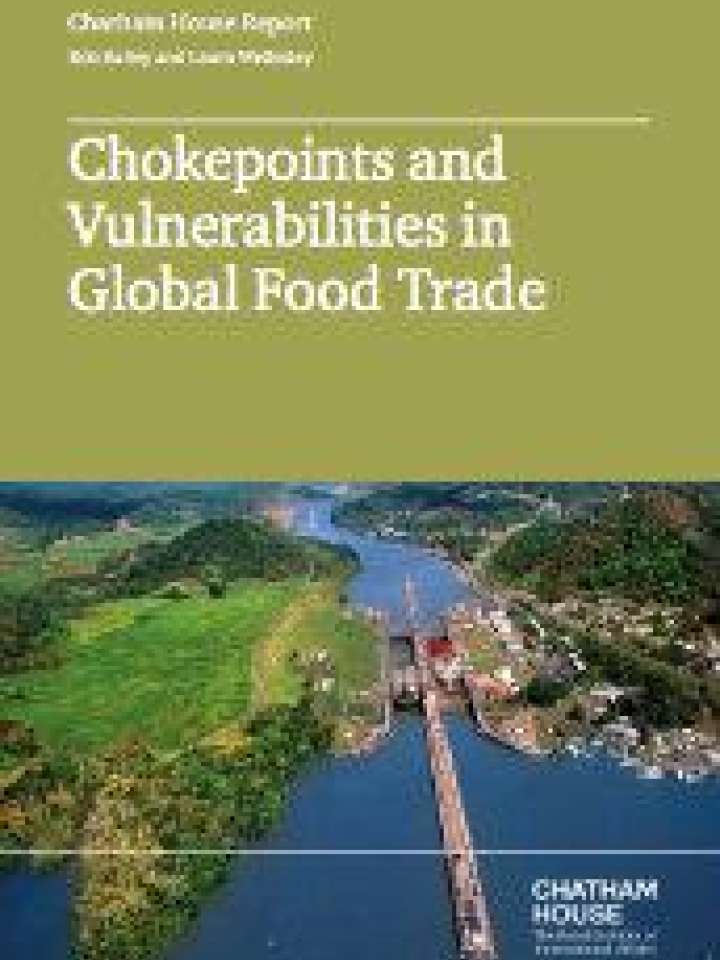Chokepoints and vulnerabilities in global food trade
This report offers a first-of-its-kind analysis of chokepoints in the global food system, combining trade data from the Chatham House Resource Trade Database with a purpose-built model to map bilateral commodity flows on to trade routes. It identifies 14 chokepoints that are critical to global food security.
These chokepoints are exposed to three broad categories of disruptive hazards:
- Weather and climate hazards, including storms or floods that may temporarily close chokepoints, and weather-related wear and tear of infrastructure that reduces its efficiency and makes it more vulnerable to extreme events.
- Security and conflict hazards may arise from war, political instability, piracy, organized crime and/or terrorism.
- Institutional, such as a decision by authorities to close a chokepoint or restrict the passage of food (for example, by imposing export controls).
Moreover, these risks are increasing, driven by three distinct trends:
- Dependency on chokepoints is growing. Growing international trade means that chokepoint dependency is likely to increase for the foreseeable future.
- Climate change is increasing the threat of disruption by acting as a hazard multiplier across all three categories of chokepoint risk. It will increase the frequency and severity of extreme weather, leading to more regular closures of chokepoints and greater wear and tear on infrastructure. Rising sea levels will threaten the integrity of port operations and coastal storage infrastructure, and will increase their vulnerability to storm surges. Climate change is expected to aggravate drivers of conflict and instability. It will also lead to more frequent harvest failures, increasing the risk of governments imposing ad hoc export controls.
- Chronic underinvestment in infrastructure is creating a double deficit – of capacity with respect to growing trade volumes, and of resilience with respect to climate change.
This report proposes five areas for action:
- Integrate chokepoint analysis into mainstream risk management and security planning
- Invest in infrastructure to ensure future food security
- Enhance confidence and predictability in global trade
- Develop emergency supply-sharing arrangements and smarter strategic storage
- Build the evidence base around chokepoint risk
Explore further
